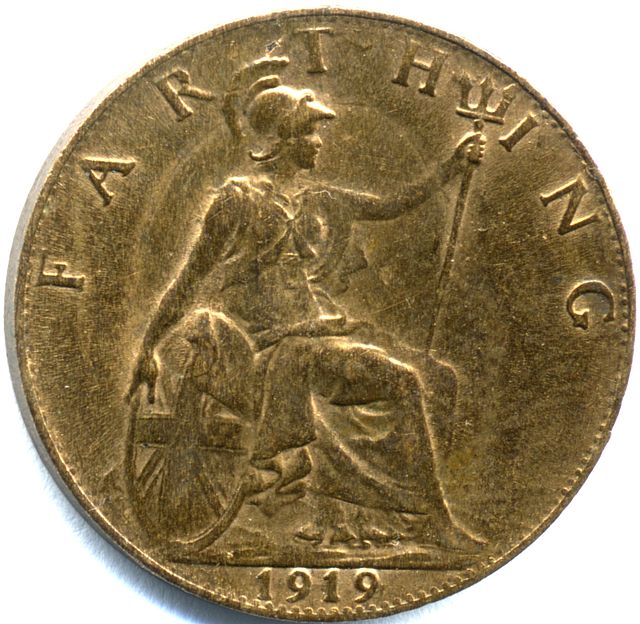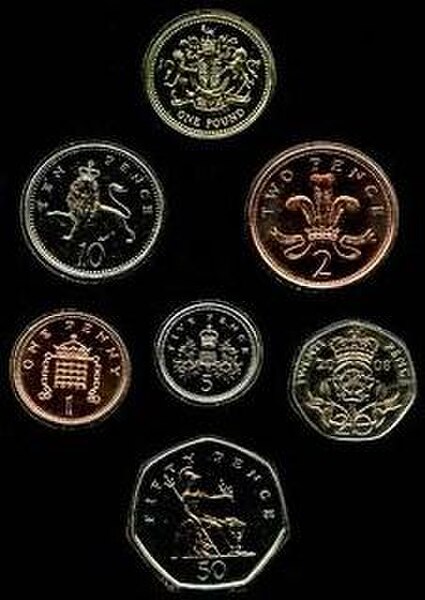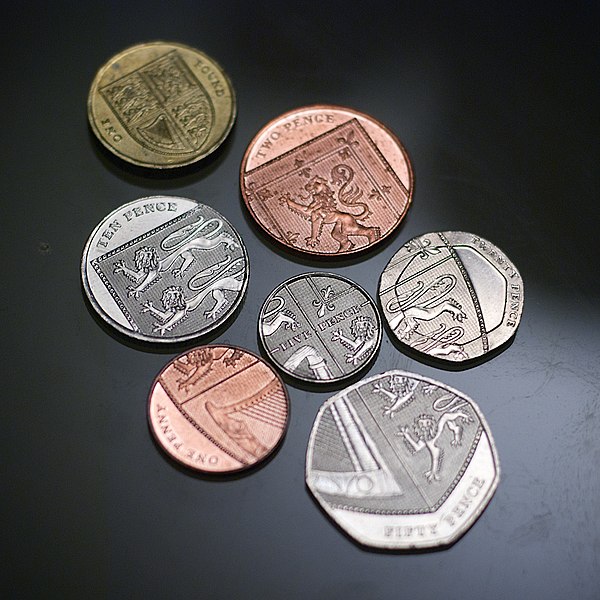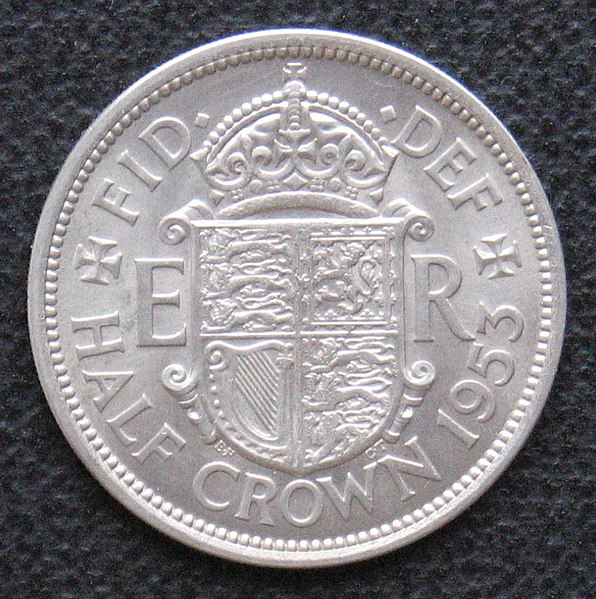The British farthing abbreviated qua., was a denomination of sterling coinage worth 1/960 of one pound, 1/48 of one shilling, or 1/4 of one penny; initially minted in copper and then in bronze, which replaced the earlier English farthings. Before Decimal Day in 1971, Britain used the Carolingian monetary system, wherein the largest unit was a pound sterling of 20 shillings, each of 12 pence. Each penny was divided into 4 farthings, thus, a pound sterling contained 960 farthings, and a shilling contained 48 farthings. From 1860 to 1971, the purchasing power of a farthing ranged between 12p and 0.2p in 2017 values.
Britannia reverse, 1746
Britannia reverse, 1895–1936
George II
George III
Coins of the pound sterling
The standard circulating coinage of the United Kingdom, British Crown Dependencies and British Overseas Territories is denominated in pennies and pounds sterling, and ranges in value from one penny sterling to two pounds. Since decimalisation, on 15 February 1971, the pound has been divided into 100 (new) pence. Before decimalisation, twelve pence made a shilling, and twenty shillings made a pound.
Examples of the standard reverse designs minted until 2008. Designed by Christopher Ironside (£2 coin is not shown).
The Royal Shield formed by six UK coins, with the £1 coin depicting the whole of the shield.
1981 commemorative twenty-five pence coin, celebrating the marriage of Prince Charles and Lady Diana Spencer.
Half crown, 1953








